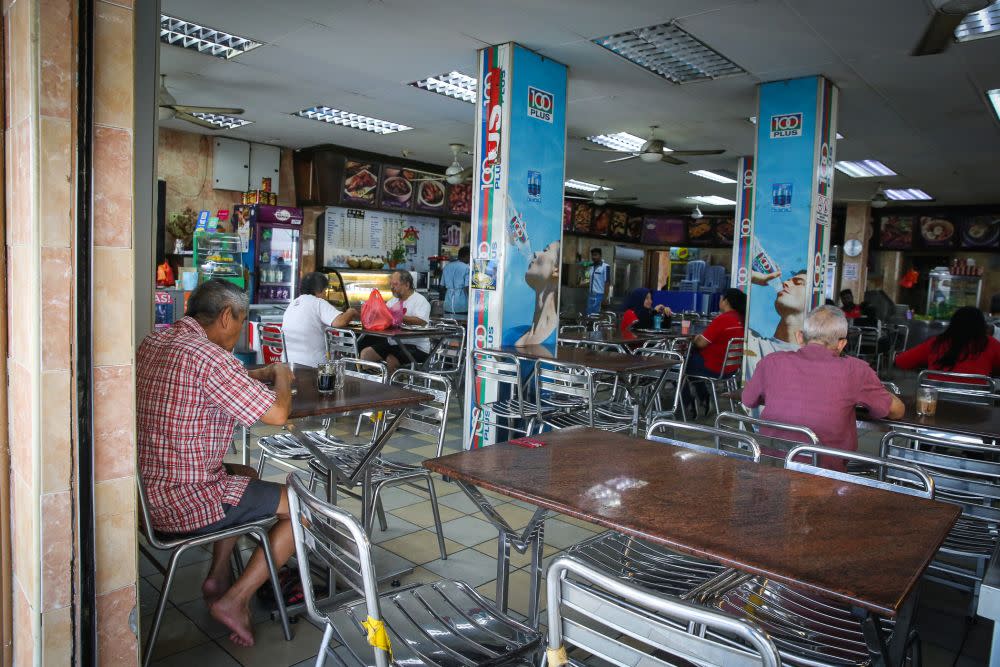Report: Mamak fare and traditional Chinese medicine to cost more in 2022

KUALA LUMPUR, Dec 9 — Malaysians can expect to pay more for mamak food and traditional Chinese medicine come the new year as proprietors say they cannot absorb the rising costs of goods.
The prices for popular beverages and food at mamak outlets like teh tarik, Milo, nasi lemak, roti canai, thosai, chapati and mee goreng may increase by 10 to 20 sen, or 10 per cent, after December 30, Malaysiakini reported today.
Malaysian Muslim Restaurant Owners Association (Presma) president Jawahar Ali Taib Khan said that eateries in Klang Valley are likely to impose a 10 per cent price, to cover the 30 per cent increments in costs for raw materials.
“We have been able to maintain our prices for over three years. Presma is perhaps the only association that has asked its members not to raise their prices until December 30.
“But definitely we will impose an increment by next year, at a reasonable rate. We will minimise our increment,” Jawahar was quoted saying.
Presma has some 9,000 registered members nationwide.
Besides costlier goods, Jawahar said the food and beverage industry is struggling with worker shortages, forcing employers to fork out higher wages to hire staff, thus increasing overhead costs.
The Malaysian Indian Restaurant Owners Association (Primas), which has 1,500 members, said that restaurants have increased prices of food and beverages sold at their premises after prices of ingredients and goods they needed increased by 50 to 100 percent.
Primas vice-president C Krishnan said some of the restaurants have increased their prices by 10 percent, or 10 sen to 30 sen, which is unlikely to have a real impact on consumers who understand the price increase.
“A carton of 48 cans of condensed milk used to cost RM107 a year ago but now it’s RM127. Imported dhal increased from RM123 to RM129 in just a week and we can’t do anything about it.
“It is almost impossible for us to sustain our businesses without increasing the prices at our eateries. I think we may need to increase prices by 15 to 20 percent to cover the rising costs,” he told Malaysiakini.
Krishnan urged the government to understand the plight of the food service operators instead of just looking at the price tags charged to the consumers.
“Since March 2020, approximately 1,000 food outlets closed shop as they could not sustain the cost of running a business.”
The Malaysia Singapore Coffee Shop Proprietors’ General Association, which represents 20,000 members, was previously reported saying that beverages at traditional coffee shops will increase by between 20 and 60 sen next month, depending on location.
Practitioners of traditional Chinese medicine will also be charging more for consultations and their prescriptions from January 2022.
According to Federation of Chinese Physicians and Acupuncturists Association president Ng Po Kok, most of their stock are imported, and there is currently a shortage of supplies, which is proprietors had to push up the prices.
“For now, some still have stock that was previously purchased, but this will run out at the end of the month,” he told Malaysian Insight, adding that he expects fees to go up between 10 and 30 per cent.
“In fact, prices have already gone up, but not substantially. We encourage our members to absorb the costs as much as possible as everyone is going through hard times. But if prices continue to go up, we will no longer be able to absorb the costs as we are already operating at a loss. We will be forced to adapt according to the market.”
Ng said along with the price hikes, they are expecting to get fewer patients, especially those from poor financial backgrounds.
Malaysian Chinese Medical Association president Yong Wee Seong said some practitioners have already adjusted their fees, going up between 15 and 20 per cent.
“We do not want to charge this much, but we are forced to due to the current situation. We have a lot of other expenses to bear, too.”
Federation of Chinese Physicians and Medicine Dealers Associations Malaysia president Boon Yip Heng told The Malaysian Insigt that they have to explain to their customers why they were forced to increase the prices of their medicines.
Items said to increase in price are, among others, liquorice and wolfberry also known as goji berries.
Related Articles Video on price hike issue doctored to make govt look bad, says PM Demolish this soup that will delight both Popeye and the Incredible Hulk! Disappointment over Chinese medicine practitioners not allowed to operate during MCO period — KLSCAH



